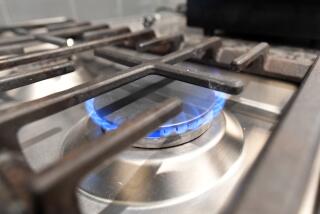New Roof? Better Check the Old Vents
- Share via
Have you had a new roof installed on your home in the recent past or do you intend to do so? A little-known but potentially deadly risk of carbon monoxide poisoning or fire can be created by roofers if furnace exhaust vents are not checked after the work is completed.
Most single-family homes in California are space- and water-heated by forced-air furnaces or water heaters burning natural gas. Hot, poisonous exhaust fumes from the furnace and water heater are commonly vented to the outside through a sheet-metal duct, which is routed through the attic and roof.
It is possible for a roofer to unknowingly cause the portion of the vent pipes he cannot see in the attic to come apart when he works on or near the exposed section of the pipes above the roof line.
Sometimes these pipes are only loosely connected and will detach with just slight vibration.
“In seven out of 10 homes re-roofed, attic vent pipes will become detached due to movement or vibration above the roof line,” said Sean Johnson of Johnson Roofing & Maintenance in Moorpark. “Our company always inspects the attic after completing a re-roof or large repair, but many operators do not, thus putting homeowners at risk.”
Naturally, if vent pipes come loose, hot fumes are trapped in the attic area, thus exposing the occupants of the home to the risk of deadly carbon monoxide gas and/or fire if hot gases are emitted close to a combustible surface.
Even if a city inspector has signed off on your job, as a precaution it is prudent to have a service technician from the Gas Co. do a safety inspection for proper venting of all gas appliances after a new roof or major roof repair is completed. This service is normally free and is recommended by the Gas Co. on a routine basis once a year because of potential venting problems with all gas equipment. Most heating, air conditioning and plumbing contractors also perform this service for a fee.
And, if you don’t already have them, carbon monoxide detectors (available at most home centers) are essential in any home heated by natural gas or oil. Even relatively new furnaces have been known to allow deadly fumes to enter the living spaces of a home.
Comments and questions can be sent to P.O. Box 711, Thousand Oaks, CA 91319. Please include a self-addressed, stamped envelope.
More to Read
Sign up for Essential California
The most important California stories and recommendations in your inbox every morning.
You may occasionally receive promotional content from the Los Angeles Times.






